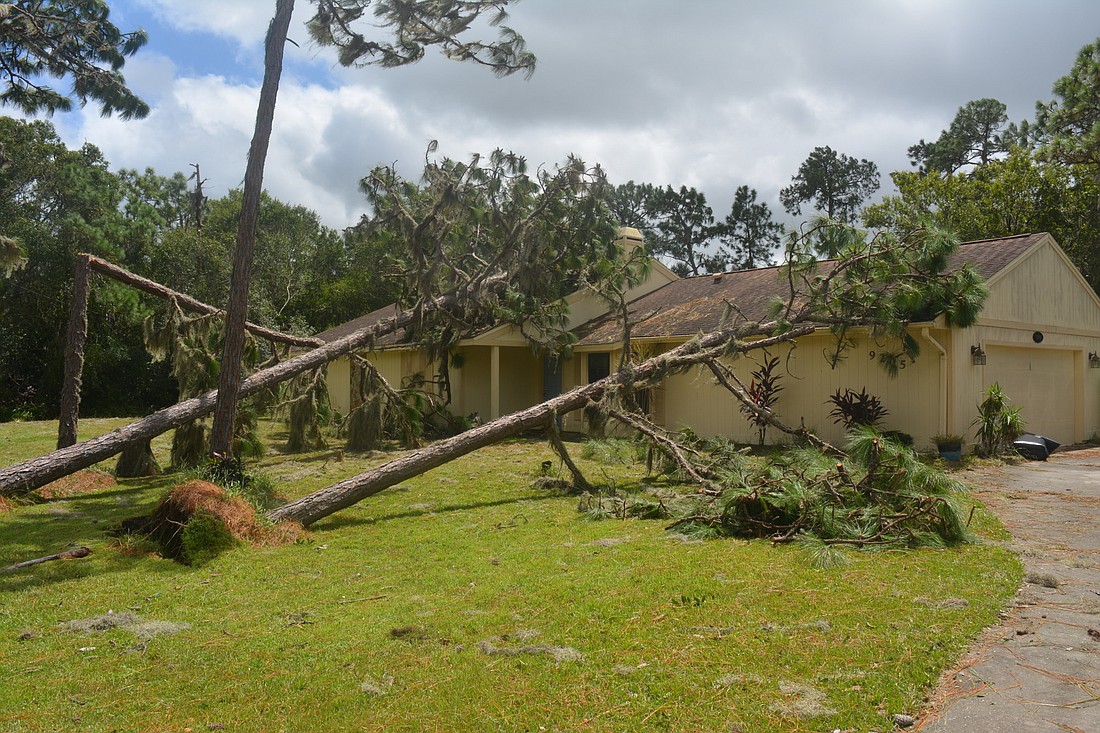- July 26, 2024
-
-
Loading

Loading

Steve Litschauer, Manatee County's chief of Emergency Management, said Thursday during a virtual press conference that COVID-19 restrictions will cut the availability of hurricane shelters by approximately two thirds.
Litschauer, who was speaking to urge county residents to be more prepared than ever with nine hurricanes predicted for the season that begins June 1 and runs through Nov. 30, said the 24 school shelters would have supported 36,842 residents in a normal year, but with social distancing a concern, that number is 13,047.
Litschauer said that with COVID-19 social distancing, that capacity has been reduced because the requirements have changed from 20 square feet per person to 60 square feet per person.
Nicholas Azzara, the county's information outreach manager, said bringing together people in such a small space is a major concern for the county.
"People need to have multiple plans of evacuation and public shelters need to be their last resort," said Nicholas Azzara, the county's information outreach manager.
Azzara said there would be no guarantee a crowded shelter would allow people to stay safe from COVID-19.
Both Azzara and Litschauer urged residents to make plans to evacuate in 10s of miles and not 100s of miles. They said previous hurricanes have proven the roads will be jammed. They said it is important to know a home's grade when it comes to withstanding a hurricane or flooding.
They said homes built after March 2012 are made to withstand winds of 150 mph or more, which would be a Category 4 hurricane. Homes built from 2002 to 2012 are rated to withstand 130 mph winds. Before 2002, homes on the coast were built to withstand 110 mph winds and those inland were made to withstand 90 mph winds.
Homes in the county are rated A, B, C or D in evacuation levels related to flooding. Those levels, along with the location of evacuation shelters and places to pick up sandbags can be found at mymanatee.org. Residents also can find information, such as what year their home was built, at the site.
With the information in hand, they said a plan might be to drive only a few miles away to a friend's home that is not in a high evacuation area, or is built to withstand high winds. Hotels outside the evacuation zones also could offer a safe haven. There might not be a need to drive to another state. If you feel you must evacuate long distance, Litschauer said to leave as soon as possible.
Those who have special needs, such as being oxygen dependent or who need electricity, should register at mymanatee.org/needs/.
If residents do need to check into an emergency shelter, they will need to bring a mask and their own supplies, such as a cot or blankets.
"As we say, this is a life boat, not a pleasure cruise," Litschauer said.
Those who would like emergency information texted to them if a hurricane hits can register at mymanatee.org/emergency'.
Litschauer said even the county's Emergency Operations Center is cutting its occupancy rate from 150 people to 25 in the main room.
He said the county is researching other buildings in the county to be possible shelters. "We're looking at other schools and county buildings," he said.
Both said it is key to shop for emergency items now because the shelves will be cleared during an emergency. And even right now some items are in short supply during the pandemic.
They even brought up some pet tips such as asking people not to tie their pets to a tree or asking them to remember to bring plastic bags if they evacuate to clean up after their pet.